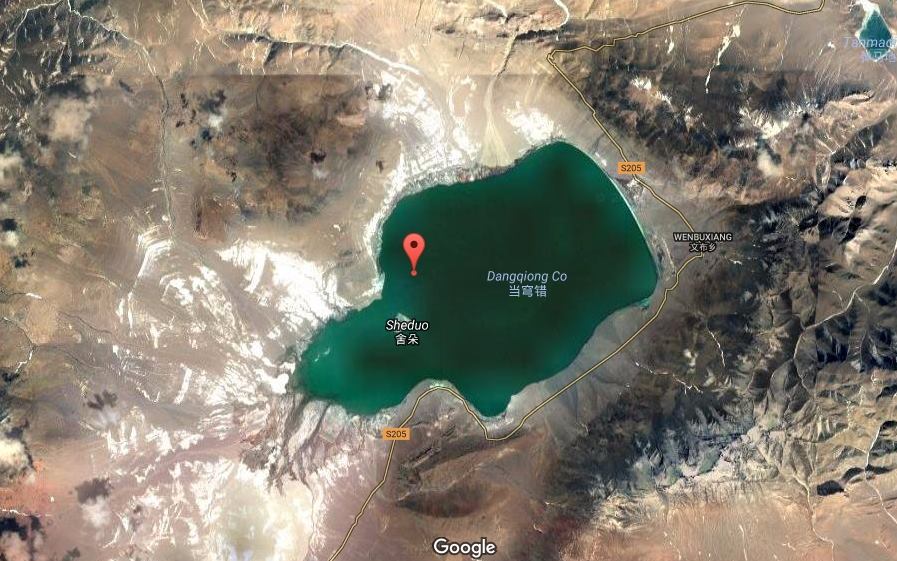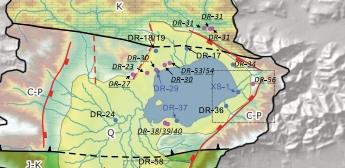The Fifth Element
 Mythology: Fountain of Youth, Tibet
Mythology: Fountain of Youth, Tibet
The fifth element is Boron.
It is essential in organisms in the repairs of cell walls.
Until recently (),
the largest known natural source on Earth was a lake in Tibet.
The average human (?) consumes about 60 grams of Boron in a lifetime,
through food.
Various benefits of Boron, as part of a human diet, are suggested in scientific papers.
However, it is discovered that Boron is banned in most countries.
The element is exclusively formed in Super Novae or by Cosmic Rays.
Why Tibet?
 Location of Boron Lake:
Location of Boron Lake:
https://goo.gl/maps/bBnaLipppCr
(I speculated briefly on a connection between Meditation practices in Tibet
and high concentrations of Boron in a lake in Tibet,
via Cosmic Ray formation.
This would mean that Tibetan Meditation somehow had an influence on
Cosmic Rays incidence, which is not supported scientifically.
)
The conventional scientific explanation of the origin of boron in the Damxung Co Salt Lake (central Tibet) is this:
Evidence from boron geochemistry and isotopes
The origin of boron in boron-rich salt lakes in the Tibetan Plateau has long been the subject of debate.
The Damzung Co Salt Lake in central Tibet has high boron concentrations (B = 276–313 mg/L) and is an ideal site for investigation.
A study revealed a high boron concentration and homogeneous Boron values in SURFACE brine water samples.
Distribution of the Boron values in the drainage basin rules out the possibility that the source of boron is from ground/surface water.
The widely outcropped Quaternary carbonate clay is therefore "recognized" as the only major source of boron in the lake.
Scientific Research:
 Boron function(s) in animals
Boron function(s) in animals
In the past several years, a wealth of new evidence has been
gathered for Boron being an essential or beneficial element in animals/humans (Hunt, 2003).
Earlier reports showed that Boron was essential for embryonic development,
at least for vertebrates, where Boron deprivation resulted in a high percentage of necrotic eggs and abnormal development of the gut in Xenopus laevis
(Fort et al., 1999).
The suggested beneficial effects of Boron in animals were supported in a number of nutritional studies,
with many of the effects related to bone metabolism.
... In addition, it has been found that physiological concentrations of Boron reduced the amount of insulin required to maintain plasma
glucose (Bakken and Hunt, 2003).
There is evidence from several laboratories that dietary Boron
plays a role in immune function in a variety of organisms.
Boron deficiency is found to affect physiology of human beings.
Affecting thyroid function,
boron deficiency is suggested to cause hyperthyroidism and lowering estrogen and testosterone blood levels in males.
Because of its role in insulin and glucose metabolism,
Boron deficiency found to affect perception and short term memory,
especially with older people.
To avoid boron deficiency, fruits, vegetables,
legumes and nuts are recommended diet.
1.0-3.0 mg day-1 is a safe intake dose for adults.
However, Boron can be toxic when overdosed.
Good intakes of boron for human consumption were found with diets abundant in Boron content such as fruits,
vegetables, legumes and nuts and the safe boron intake dose for adults was reported in the range of 1.0 to 3.0 mg day (Nielsen, 1998).
However, (Trumbo et al., 2001) of the USA stated that no recommended dietary allowance (RDA) has yet been established for boron and the average dietary intakes are thought to range between 0.87 and 1.35 mg per day.
The densest known nutritional source of boron is raisins.
Via its effect on steroid hormones and interaction with mineral metabolism,
boron may be involved in a number of clinical conditions such as arthritis.
Further research is required before boron is accepted as an essential nutrient for humans.
References:
Goldbach / Wimmer, University of Bonn
https://www.researchgate.net/publication/230126407_Boron_in_plants_and_animals_Is_there_a_role_beyond_cell-wall_structure
Role of Boron in Plant Nutrition and Human Health
Mahmoud M. Shaaban
http://scialert.net/abstract/?doi=ajpp.2010.224.240
The role of boron in nutrition and metabolism
http://europepmc.org/abstract/med/8140253
Origin of boron in the Damxung Co Salt Lake (central Tibet)
https://www.terrapub.co.jp/journals/GJ/pdf/2013e/47050513.pdf
External listing of health benefits of Boron:
Part 1
https://justmeint1health.wordpress.com/2012/07/03/boron-a-magical-mineral/amp/
Part 2
https://justmeint1health.wordpress.com/2012/07/04/boron-a-magical-mineral-part-two/
Part 3
https://justmeint1health.wordpress.com/2014/10/07/boron-a-magical-essential-mineral-part-three/
 Mythology: Fountain of Youth, Tibet
Mythology: Fountain of Youth, Tibet
 Boron function(s) in animals
Boron function(s) in animals